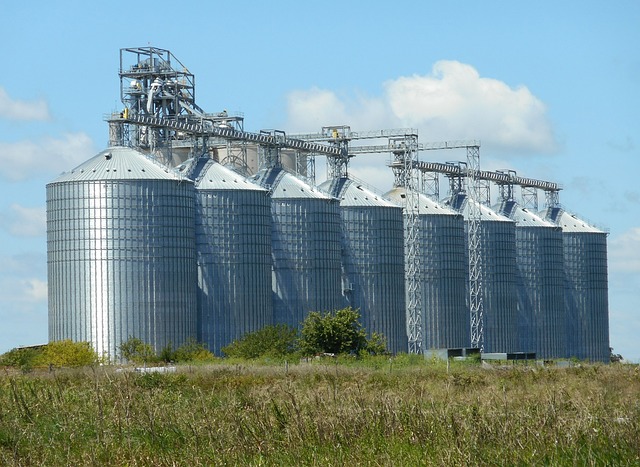Energy Storage Breakthroughs: Innovations Shaping Our Sustainable Future
As the world grapples with climate change, the urgent need for sustainable energy solutions has never been more pronounced. Renewable energy sources like wind and solar power have gained significant traction, but a critical barrier remains: energy storage. The intermittent nature of renewable energy means that without effective storage solutions, the renewable revolution could falter. Recent innovations in energy storage technology promise to reshape our approach to energy consumption and sustainability.
The Importance of Energy Storage
Energy storage systems play a pivotal role in bridging the gap between energy production and consumption. They allow us to store excess energy generated during peak production times and release it when it’s most needed. This capability is crucial for balancing supply and demand, reducing reliance on fossil fuels, and enabling a smooth integration of renewable energy into existing grids.
Advancements in energy storage technology have the potential to revolutionize various sectors, from electric vehicles to grid infrastructure, making them more efficient and sustainable. As we delve into the latest breakthroughs, it’s essential to understand the types of storage technologies and their unique advantages.
Types of Energy Storage Technologies
Energy storage systems can be broadly classified into several categories, including mechanical, chemical, thermal, and electrochemical systems. Each type has its strengths and weaknesses, and ongoing innovation across these categories is crucial for a sustainable future.
Mechanical Storage
Mechanical energy storage systems, such as pumped hydro storage and flywheels, store energy in physical forms. Pumped hydro storage utilizes two water reservoirs at different elevations; during excess energy generation, water is pumped to the higher reservoir. When energy demand peaks, the stored water is released to generate electricity. Flywheels, on the other hand, store energy as kinetic energy in a rotating mass, which can be released as electricity when needed.
Chemical Storage
Chemical storage includes technologies like hydrogen generation and bioenergy. The most promising development in this sector is green hydrogen production, where excess renewable energy is used to electrolyze water, producing hydrogen that can be stored for later use. This hydrogen can fuel vehicles, provide energy for industrial processes, and even be converted back into electricity.
Thermal Storage
Thermal energy storage systems store energy in the form of heat. They can utilize materials like molten salt, which can retain heat for extended periods, making them ideal for solar thermal applications. This technology is particularly beneficial in regions with high solar potential, allowing for energy generation even after the sun goes down.
Electrochemical Storage
Among the various energy storage technologies, electrochemical storage, particularly batteries, has made the most significant strides. Batteries store energy in the form of chemical energy and are widely used in portable electronics, electric vehicles, and grid applications. The push for higher efficiency, lower costs, and eco-friendliness in battery technology is reshaping the energy landscape.
Recent Breakthroughs in Battery Technology
The battery market has witnessed remarkable innovation over the past decade, particularly with lithium-ion batteries. However, researchers and companies are developing alternative battery technologies that promise to take energy storage to the next level.
Solid-State Batteries
One of the most exciting advancements is the development of solid-state batteries. Unlike traditional lithium-ion batteries that use liquid electrolytes, solid-state batteries employ solid electrolytes, which enhance energy density and safety. These batteries have the potential to double the energy capacity of current lithium-ion technologies, enabling longer-lasting electric vehicles and more extensive energy storage solutions.
Flow Batteries
Flow batteries represent another innovative approach. They store energy in liquid electrolytes contained in external tanks, allowing for scalable energy storage systems. Unlike traditional batteries, flow batteries can be charged and discharged simultaneously, making them suitable for larger grid applications and long-duration energy storage needs.
Sodium-Ion Batteries
With the increasing demand for lithium-ion batteries, researchers are exploring sodium-ion batteries as an alternative. Sodium is abundant and less expensive than lithium, offering a potentially cost-effective solution for energy storage. While sodium-ion technology is still in its infancy, it presents a promising avenue for large-scale energy storage systems, particularly in areas with limited access to lithium resources.
Innovations in Grid-Scale Storage Solutions
Grid-scale energy storage is essential for integrating renewable energy into the power grid. Various innovative projects worldwide are setting the stage for significant improvements in how we manage energy distribution and storage.
Battery Storage Farms
Battery storage farms, composed of hundreds or thousands of batteries, can store substantial amounts of energy for grid stability. Projects like Tesla’s Hornsdale Power Reserve in South Australia have shown the effectiveness of large-scale battery installations in stabilizing the grid, providing ancillary services, and reducing reliance on fossil fuels.
Hybrid Systems
Companies are increasingly exploring hybrid energy storage systems that combine multiple technologies to optimize efficiency and performance. For instance, integrating batteries with pumped hydro or thermal storage can create a more flexible energy management system that utilizes the strengths of each technology based on specific needs and conditions.
The Role of Artificial Intelligence and IoT
As energy storage technologies continue to evolve, artificial intelligence (AI) and the Internet of Things (IoT) are playing crucial roles in enhancing their efficiency. AI algorithms can analyze vast amounts of data generated by storage systems, helping to predict energy demand and optimize storage operations. IoT devices enable real-time monitoring and management of energy storage systems, providing insights into asset performance and maintenance needs.
The Environmental Impact of Energy Storage
While advancements in energy storage are essential for a sustainable future, it is equally important to consider their environmental impact. The production and disposal of batteries, particularly lithium-ion batteries, raise concerns about resource extraction, land use, and waste management. Future innovations should not only focus on enhancing performance but also prioritize sustainability by utilizing recyclable materials and reducing the carbon footprint of production processes.
Global Initiatives and Collaboration
Governments and organizations worldwide are recognizing the importance of energy storage in achieving climate goals. Initiatives aimed at accelerating the deployment of energy storage technologies, such as funding research and development, imposing mandates for battery recycling, and supporting grid resilience strategies, are being adopted globally.
Collaboration among private sector players, governmental bodies, and research institutions fosters innovation and accelerates the transition to a sustainable energy future. By pooling resources and knowledge, stakeholders can drive breakthroughs, streamline regulations, and facilitate the adoption of storage technologies across various sectors.
Conclusion: A Beacon of Hope
Energy storage breakthroughs are not just advancing technology; they represent a paradigm shift in how we think about energy production and consumption. From enhancing the reliability of renewable energy sources to powering the electric vehicles of tomorrow, the innovations emerging in the energy storage sector are instrumental in shaping a sustainable future.
As we continue to explore and invest in these technologies, it is essential to address the environmental impacts and prioritize sustainability in every step of innovation. With collective efforts from governments, businesses, and individuals, we can harness the power of energy storage to build a cleaner, more resilient energy system for generations to come.










